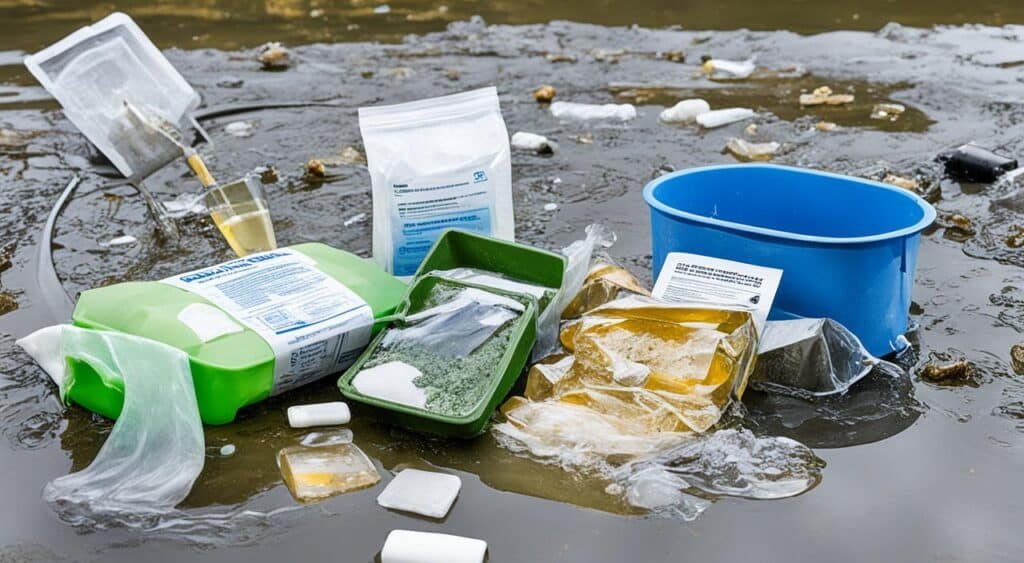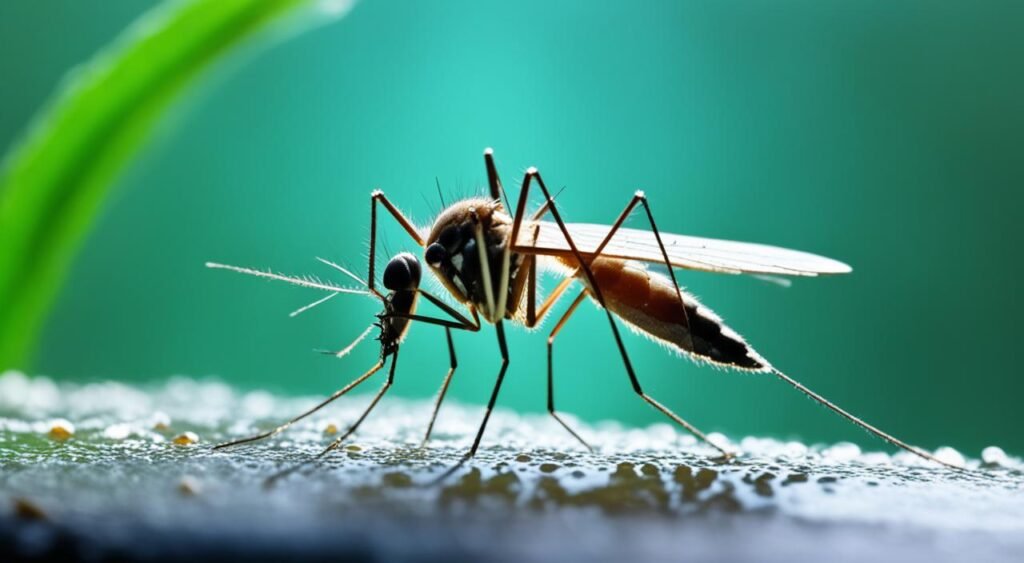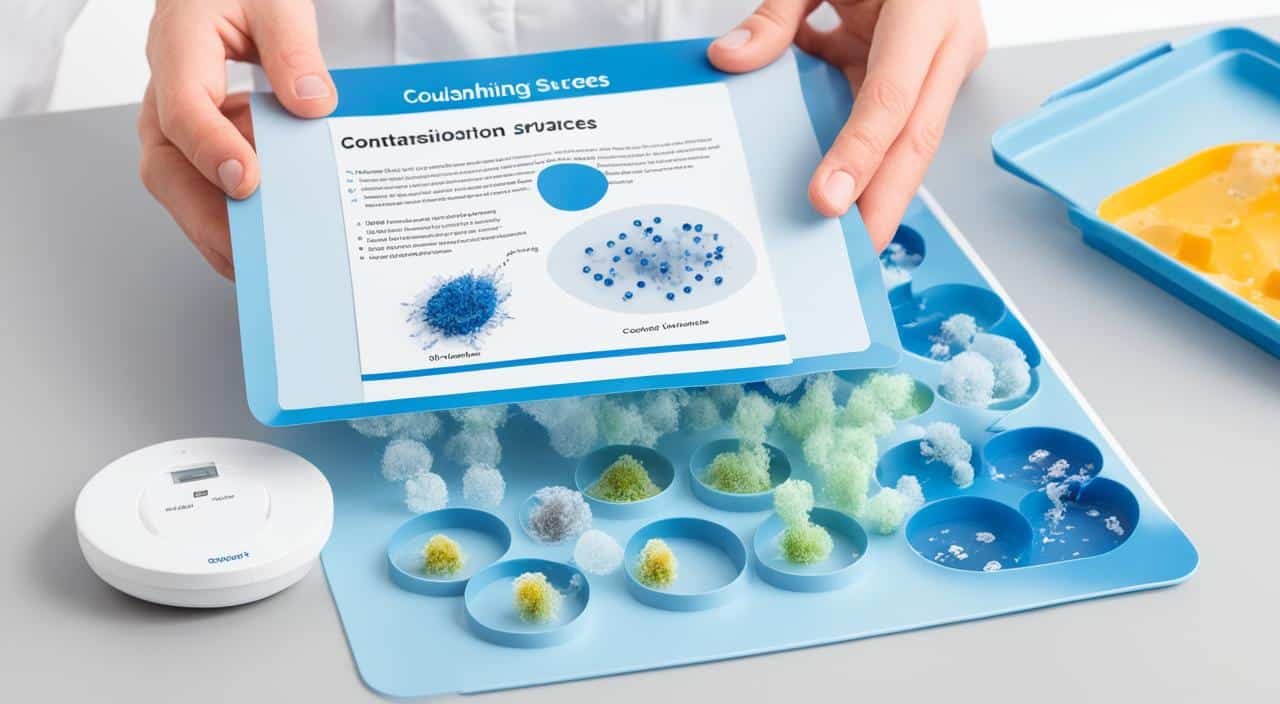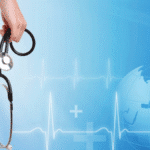Infectious diseases are caused by harmful organisms like bacteria, viruses, and others. They can move from one person to another. This can happen through direct touch, contact with dirty surfaces, eating or drinking something contaminated, or from insect bites.
The main ways diseases spread include direct contact like shaking hands. Also, there’s touching things that sick people touched, breathing in germs when they’re in the air, or getting bitten by disease-carrying bugs. Many well-known diseases come from infections, and these can be really bad if you don’t get treatment.
To stop them from spreading, it’s important to wash hands well, get vaccinated, handle food safely, and avoid getting bit by bugs that carry diseases.
Key Takeaways
- Infectious diseases can spread through direct contact, indirect contact, airborne transmission, and vector-borne transmission.
- Common infectious diseases include viral, bacterial, fungal, and parasitic infections.
- Infectious diseases can lead to serious complications if left untreated.
- Prevention strategies involve good hygiene, vaccination, safe food handling, and controlling exposure to disease vectors.
- Understanding the modes of transmission is crucial for preventing the spread of infectious diseases.
Also Read : What Is Cash Flow And Why Is It Important ?
Overview
Infectious diseases are a big health problem, affecting many people each year worldwide. These diseases stem from harmful pathogens. These include viruses, bacteria, fungi, parasites, and even prions.
It’s crucial to understand what these diseases are and how they start. This knowledge helps in preventing, diagnosing, and treating them.
Also Read : What Role Does Diet Play In Controlling Blood Pressure?
What Are Infectious Diseases?
Infectious diseases are caused by tiny harmful microorganisms. These can get into our bodies and mess with how they work. They can spread from one person to another, through food or water, or by insects. Different from these, noninfectious diseases come from within. They’re caused by our genes, the way we live, or our surroundings.
Also Read : How Do You Make A Frankie?
Causes of Infectious Diseases
- Viruses: Tiny agents that need our cells to make copies, causing diseases like the flu, HIV, and COVID-19.
- Bacteria: Microscopic living things that can cause a lot of diseases, including strep throat, TB, and cholera.
- Fungi: Organisms that can affect our skin, lungs, and more, causing issues like athlete’s foot and thrush.
- Parasites: Live on or inside us, leading to diseases such as malaria and toxoplasmosis.
- Prions: Infectious proteins responsible for rare but serious brain disorders like CJD.
Knowing about different pathogens is key for doctors and nurses. It helps them diagnose and treat diseases well.
Also Read : What Are The Health Benefits Of Regular Exercise?
“Infectious diseases remain a major cause of global death. Their effect on human health, the economy, and society is huge.” – World Health Organization
Also Read : What Kinds Of Street Food Are There In USA ?
| Pathogen Type | Examples of Infectious Diseases |
|---|---|
| Viruses | Influenza, HIV/AIDS, COVID-19, Hepatitis, Measles |
| Bacteria | Tuberculosis, Cholera, Pneumonia, Salmonella, Lyme Disease |
| Fungi | Athlete’s Foot, Candidiasis, Aspergillosis, Cryptococcosis |
| Parasites | Malaria, Giardiasis, Toxoplasmosis, Hookworm Infection |
| Prions | Creutzfeldt-Jakob Disease (CJD), Bovine Spongiform Encephalopathy (BSE) |
Modes of Transmission
Infectious diseases can spread through various routes. Understanding these ways is key to stopping their spread. The primary ways of spreading diseases are through direct contact, indirect contact, and the air.
Direct Contact
Direct contact is when illness passes from one person or animal to another. It can be a handshake, sexual contact, or even during childbirth. If an infected person gets too close to someone else, they can pass on the illness.
Indirect Contact
Indirect contact is about touching something contaminated and then touching your face. This lets germs enter your body. Germs on doorknobs or tables from an infected person can cause you to get sick.
Airborne Transmission
Illness can spread through the air. When infected people cough, sneeze, or breathe, they release tiny droplets. These droplets can be inhaled by those nearby. This is how some diseases spread, from person to person, or from animals to people.
| Transmission Mode | Description | Examples |
|---|---|---|
| Direct Contact | Transfer of pathogens through physical touch or contact | Shaking hands, sexual contact, mother-to-child during childbirth |
| Indirect Contact | Transfer of pathogens through contaminated surfaces | Touching a doorknob, table, or other object that has been touched by an infected individual |
| Airborne Transmission | Transfer of pathogens through tiny droplets or aerosols released into the air | Coughing, sneezing, or breathing by an infected person |
It’s crucial to know how diseases spread. This helps us make plans to stop them.
Common Infectious Diseases
Viruses and bacteria cause many infectious diseases around the world. These range from the common cold to more severe diseases. Knowing the difference between viral and bacterial infections helps us get the right treatment early. This is key to preventing their spread.
Viral Infections
Viruses like the flu, HIV/AIDS, the common cold, and COVID-19 can easily pass from one person to another. They are tough to treat with antibiotics. Doctors usually prescribe antiviral drugs or offer supportive care to help the immune system fight these viruses.
Bacterial Infections
Infections caused by bacteria include strep throat, tuberculosis, pneumonia, and hepatitis. They usually respond well to antibiotics. But, if not treated, they can lead to severe health problems. Knowing the signs of bacterial infections helps in getting medical help quickly.
| Common Viral Infections | Common Bacterial Infections |
|---|---|
| Influenza (Flu) | Strep Throat |
| HIV/AIDS | Tuberculosis |
| Common Cold | Pneumonia |
| COVID-19 | Hepatitis |
It’s important to understand how viral and bacterial infections differ in how they spread and their treatments. This knowledge is crucial for staying healthy and stopping the spread of these diseases. Always seek medical help and follow health officials’ advice. This will help reduce the risks of infectious diseases.
“Infectious diseases remain a significant public health challenge, requiring vigilance, ongoing research, and coordinated efforts to control their spread.”
Infectious Diseases Spread Through Food and Water

Many illnesses can spread through food or water. They affect millions worldwide. These issues are a big public health problem.
Bacteria like E. coli and Salmonella often cause foodborne illnesses. This happens when food is not handled or cooked properly. Not cooking food well and mixing cooked and uncooked foods can spread these bacteria.
Hepatitis A, Giardia, and Cryptosporidium are waterborne diseases. They come from dirty water. When people drink this water, they get stomach illnesses. Bad water treatment and hygiene make these diseases more likely.
| Foodborne Illnesses | Waterborne Diseases |
|---|---|
|
|
It’s important to handle food safely and drink clean water. This helps avoid getting sick. Teaching people about these topics is key to staying healthy.
“Contaminated food and water are major sources of infectious disease outbreaks, highlighting the need for vigilant food safety and water treatment practices.”
Infectious Diseases Spread by Insects and Animals

Insects and animals can transmit many infectious diseases. These are known as vector-borne diseases and zoonotic infections. Knowing how these spread helps protect public health.
Mosquito-Borne Diseases
Malaria, dengue, Zika, and West Nile virus are spread by mosquitoes. They cause symptoms like fever and chills. Severe cases can lead to problems with the brain. To avoid these diseases, use insect repellent and wear protective clothing. Also, remove any standing water in your area. This is where mosquitoes lay their eggs.
Zoonotic Diseases
These are diseases that pass from animals to people. For example, rabies spreads through bites or scratches. Lyme disease comes from ticks. And viral hemorrhagic fevers can be caught by touching sick animals or their fluids.
To prevent zoonotic diseases, don’t directly touch wild animals. Always handle your pets and livestock with care. If you get bitten or scratched by an animal, seek medical help right away.
| Vector-Borne Diseases | Zoonotic Diseases |
|---|---|
| Malaria | Rabies |
| Dengue | Lyme disease |
| Zika | Viral hemorrhagic fevers |
| West Nile virus |
“Preventing exposure to disease-carrying insects and animals, as well as avoiding direct contact with wildlife, is crucial for reducing the risk of contracting vector-borne and zoonotic infectious diseases.”
Infectious Diseases and Mother-to-Child Transmission
Infectious diseases are a big risk with mother-to-child transmission. This happens when a child can get a disease from their mother during pregnancy, birth, or when breastfeeding. Illnesses like HIV, hepatitis B, rubella, and cytomegalovirus can pass to the baby. They can go through the placenta or be transmitted by other ways.
Getting good prenatal care, being part of vaccination programs, and taking careful steps during birth and breastfeeding are key. They help lower the chance of passing diseases from mother to child. Knowing how these diseases spread and using effective prevention steps, doctors and soon-to-be mothers can protect both their health.
Preventing Vertical Transmission
A lot of steps are needed to reduce the risks of passing diseases from mother to child. This includes:
- Getting thorough prenatal care and testing for diseases during pregnancy.
- Giving vaccines on time, like those for hepatitis B and rubella, to keep the mother and baby safe.
- Using good infection control during childbirth, like wearing protective clothes and using clean techniques.
- Telling mothers why certain breastfeeding practices are important, like staying clean and not breastfeeding when they’re sick.
When doctors and expecting mothers cover these areas, they protect themselves and their babies. This lowers the chances of spreading diseases from mother to child.
“Prevention is the key to mitigating the risks of infectious diseases during pregnancy, childbirth, and breastfeeding. By taking proactive measures, we can protect the health of both mothers and their children.
Risk Factors and Complications

Infectious diseases can affect anyone, but some people are more likely to get sick. It’s important to know who these people are so they can avoid getting sick or get help quickly.
Groups at Higher Risk
People with weak immune systems, like those fighting cancer or who have HIV/AIDS, are at a big risk. This also includes young kids and elderly people because their bodies might not fight off diseases well. Those who work in healthcare are also more likely to catch diseases because they’re around sick people a lot.
Potential Complications
Some infectious diseases can lead to very serious problems like dehydration or even cancer. Quick action by doctors is necessary to stop these complications from getting worse.
Knowing who is at risk and what kind of problems can happen is key. It helps people get help early and know how to keep themselves safe. By being careful, people can lower their chances of getting very sick.
“Infectious diseases can have far-reaching consequences, but by understanding the risk factors and potential complications, we can empower individuals to take proactive measures and protect their health.”
Infectious Diseases
Infectious diseases are illnesses caused by harmful germs, viruses, bacteria and more. These can enter our body and make us sick. They can be passed through many ways like direct contact or even through the air. Knowing about different types of infectious diseases is key to stop them spreading.
The most common infectious diseases are:
- Viral infections, like the flu, HIV, and COVID-19
- Bacterial infections, including strep throat and tuberculosis
- Fungal infections, like athlete’s foot
- Parasitic infections, which include malaria and hookworm
These diseases can have many symptoms, from mild to very severe. Some are easy to treat, but others need more serious care. But no matter the illness, they all are a big concern for public health. So, stopping them from spreading is very important.
“Infectious diseases remain one of the leading causes of death worldwide. Understanding their causes, modes of transmission, and prevention strategies is crucial for protecting individual and community health.”
To avoid getting ill, it’s smart to know about different infectious diseases. By learning how they spread, we can all work to stay healthy.
Also Read : Your Trusted Online Health Warehouse For Wellness Needs
Prevention and Control Measures

Stopping the spread of infectious diseases is vital. We need to use various ways to prevent them. Good prevention methods greatly lower our chances of getting or giving illnesses. This approach includes keeping our hands clean, getting vaccinated, and handling food safely.
Hand Hygiene
Washing your hands with soap and water is simple yet very effective. It stops germs from spreading. If you can’t wash your hands, using hand sanitizer helps a lot. It kills germs when soap and water are not around.
Vaccination
Vaccines are a key tool in fighting many diseases, including the flu and COVID-19. They help our bodies build strong immunity. This shields us and those around us from getting sick, lowering the chance of outbreaks and bad health.
Safe Food Handling
Keeping food safe is crucial to avoid getting ill. Cooking your meals well and storing food properly are big steps. Use clean surfaces and handle food the right way. Also, always drink treated water to steer clear of waterborne diseases.
Using all these methods together helps keep us safe and lessens the spread of diseases. Being careful with our hands, getting vaccinated, and handling food properly are key. These efforts protect everyone’s health.
“Preventive measures are the best way to combat the spread of infectious diseases and protect public health.”
Conclusion
Infectious diseases come from many things like viruses, bacteria, fungi, and parasites. They are a big risk to people around the world. It’s vital to know how they spread, whether through touch, the air, or not. This knowledge helps put in place ways to stop them.
From common colds to more severe diseases, they can harm many. By keeping clean, handling food and water safely, and getting vaccines, we can fight these diseases. This teamwork helps protect everyone’s health.
Staying alert and ready to act is key in facing this challenge. We must all do our part to keep the world healthy and strong against diseases.
FAQs
What are infectious diseases?
What are the common types of infectious diseases?
How can infectious diseases spread?
What are some common ways infectious diseases can be transmitted?
What are some examples of viral and bacterial infections?
How can foodborne and waterborne diseases be prevented?
What are some examples of vector-borne and zoonotic diseases?
How can mother-to-child transmission of infectious diseases be prevented?
What are some examples of sexually transmitted infections (STIs)?
Who are the high-risk groups for infectious diseases?
What are some effective prevention and control measures for infectious diseases?
Source Links
- https://my.clevelandclinic.org/health/diseases/17724-infectious-diseases
- https://www.sahealth.sa.gov.au/wps/wcm/connect/public content/sa health internet/conditions/infectious diseases/ways infectious diseases spread
- https://www.mayoclinic.org/diseases-conditions/infectious-diseases/symptoms-causes/syc-20351173





